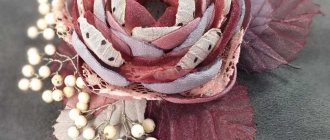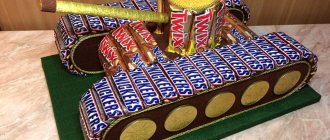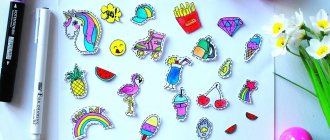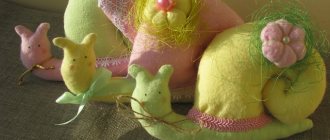What to include in a passe-partout
When designing many works, they resort to matting. Often they decorate embroidered paintings with threads, beads, engravings, drawings, photographs... Using mats you can emphasize, highlight the necessary elements or parts of the work, create a 3D effect, the texture of the image... There are many examples of photo mats, where the work has a completely different look than without such a stylish registration
Color is the basis of the mat
Before creating a mat for a painting, you must first decide on the main color. The entire type of exposure will depend on the color scheme of the frame, because with an unfavorably chosen color, the image can dissolve in the frame and, on the contrary, look very provocative.
There are several tips for choosing colors:
- white color is well suited for black and white photographs and monochrome graphics;
- calm pastel colors are well suited for engravings, which do not distract the eye from the work itself;
- rich colors are an excellent solution for decorating posters;
- black color visually reduces the image.
It is worth noting that when choosing a color for the base of the mat, you need to take into account where the finished work is placed, what design, style, color scheme will be in that room, the work should look harmonious with the environment.
Purpose
Having decided to order a passe-partout for a photo or any image that will look aesthetically pleasing and original, first familiarize yourself with the purposes of such an item. Often it acts as a unique element of art, emphasizing a particular work of art. In addition, this type of frame performs the following functions:
- facilitating the perception of the work due to the fact that it is separated from the rest of the interior;
- focusing on individual elements of the image that enhance the impact on viewers;
- protection of a piece of art from the negative effects of the environment.
What to make a passe-partout from
To make a passe-partout frame with your own hands, you need to prepare the necessary materials in advance. As a rule, mats are made from cardboard, which is created from pressed layers of whatman paper. To ensure that the frame is not white, glue a sheet of paper of the desired color or shade on top. Paper should be used that is well resistant to sunlight and light.
You can also use velvet, silk, suede, cotton to create mats - such materials are great for decorating three-dimensional paintings, displays of weapons, for watches...
Dimensions
The passe-partout frame (most of it) has the same dimensions on all sides. This approach is considered justified from a commercial point of view, because it can be used for both portrait and landscape versions. True, this format is not always appropriate from an aesthetic point of view. This is explained by the peculiarities of human visual perception, because When considering vertical objects, the most harmonious will be the one whose lower part has more weight.
It should be said that a symmetrical frame is not always bad, for example, if the picture has a bright accent in the lower part, then additional visual enhancement will not be required. There is no need for an asymmetrical mat if it is purchased for educational and scientific illustrations. In general, a well-chosen frame and dimensions can give the status of a work to any linear and color chaos, and even naive children's drawings.
Tips for creating a passe-partout
To simplify the creation of a mat for drawing with your own hands, you need to follow the recommendations of experts:
- You should not allow the mat to merge with the image or frame.
- To more clearly delineate the space, use a slip - a thin frame made of wood or plastic.
- For a large, bright painting, a wide frame will work well.
- Is it possible to decorate a passe-partout?
There is more than one way to make a passe-partout with your own hands, as well as different options for decoration. They often use a plain color mat in many works, but there are exceptions and I want to make the work more interesting and original. In such cases, you can do this with the help of decor. To design a passe-partout for an A4 drawing made by a child’s hand, you can use various buttons, beads, miniature toys...
Note!
- DIY gifts for February 23rd - a large selection of ideas for creating unusual gifts for Defender of the Fatherland Day
What to give a 2-year-old boy - a list of the best options for an interesting and useful gift (120 photo ideas)
Papier-mâché - TOP 120 photo reviews of original products. Detailed instructions for beginners on creating beautiful crafts
To decorate a picture with a romantic theme, it is enough to complement the mat with lace, various ribbons, dried roses... Overlays made of brass, pressed and varnished look very beautiful and stylish. This decor looks especially unusual on the mat for drawing A3. You can decorate the passe-partout using transfer vignettes, artistic painting, polymer clay products...
General recommendations
If a needlewoman is interested in how to make a passe-partout for embroidery on her own, then she will benefit from general recommendations on selection, production and decoration.
- You can take a chance and make an original print from fabric.
- The wallpaper will be in harmony with the wall, but it should not cause conflicting feelings about its combination with the picture.
- For a large and bright work, you should make a wide frame, and for a miniature one, a narrow one.
- If the basics of manufacturing are mastered, you can make a double frame.
An interesting design option
Making a mat is not difficult, but an error in determining the dimensions can cost a lot of time. Therefore, you need to remember the basic principles for selecting parameters:
- If the image is small and has a lot of details, use a wide lining up to 15 centimeters in size.
- Large and medium-sized pictures are framed with whatman paper 1/3 the width of the narrow side.
- The bottom margin should be wider, and the side and top margins should be equal to each other.
- If the embroidery is vertical, the side margins should be 1/3 the width of the narrow side of the picture. The top margin should be 1/5 of the height, the bottom - 1/3.
You might be interested in this Features of embroidered pillowcases
Embroidery with passe-partout
Easy passe-partout for children's drawings
Children's drawings and appliqués can be beautifully decorated using mats; they will also last longer and can be placed in the room on the wall. There is an easy way to make a mat for drawing with your own hands; for this you will need:
- sheet of white A4 paper;
- ruler;
- scissors;
- children's drawing.
Using a ruler and pencil on a sheet of paper, measure 2 cm from each corner and place dots. Draw an even rectangle at the marked points. Draw 2 diagonals in the rectangle. At the intersection of the diagonals, make a cut and cut lines along the diagonals to the corners of the rectangle. Using a ruler, carefully bend all the cut elements outward. Carefully place the drawing or applique into the resulting frame. Bend the bent parts of the rectangle along the outer contour. With this simple method it is also easy to make a passe-partout for an A3 drawing with your own hands.
A simple passe-partout for an embroidered picture
Before starting work, it is worth deciding what dimensions are needed, because the frame should be approximately 4-7 cm larger than the embroidered picture on each side. You also need to take into account that cardboard or paper, the finished embroidery should be approximately 2 mm smaller in size than the frame itself. Otherwise, the embroidery will either fall out or it will not be possible to close the frame tightly.
Using a ruler and pencil, draw a rectangle or square of a certain size (depending on the format of the embroidered picture). In the drawn figure, draw 2 diagonals, make cuts along them with scissors or a stationery knife. Carefully cut out the inner square or rectangle, fold the edge inward so that the edges are even. Glue the passe-partout onto the base using glue or double-sided tape.
What tools will you need?
In addition to the main material, you need to prepare a stationery knife, a ruler, dry pencil glue, as well as a fairly wide, flat surface that you won’t mind cutting. You may need to place a plastic or wooden stand on the table for this purpose. Sometimes amateurs purchase special hand-held cutters to make mats, which make the product more neat and sophisticated.
Passepartout made of corrugated paper
The work, framed in a mat made of corrugated paper, looks original, beautiful, and interesting. This unusual design suits the different design and style of the room where the finished work will be located. You can use a mat made of corrugated paper to decorate paintings embroidered with threads or beads, artistic drawings, and children's works. In order for the corrugated paper to soften a little and not break so much, you can iron it through the fabric.
Use a ruler to take measurements from the cardboard backing. Carefully draw a rectangle on a sheet of corrugated paper so that all sides are 4-7 cm larger than the sides of the finished embroidery. Cut out the resulting rectangle and place it face down. Now you should draw a rectangle the size of embroidery, draw diagonals in it. Carefully cut the diagonal lines with a knife, wrap them and place the embroidered picture inside. Thus, the passe-partout is ready and can be installed in a frame under glass.
Passepartout made of floral felt
A do-it-yourself mat made from floral felt looks very unusual; such work will attract the attention of many. With the help of such a mat you can decorate photographs, children's drawings and appliqués, various posters, embroidered paintings with beads, threads, rhinestones... On the Internet you can find many different photo examples with exquisite decorative elements; using a material such as felt you can make a real masterpiece. The finished work in such an interesting mat will look more advantageous and attract attention.
Note!
Kinusaiga technique - TOP-140 photos of the best ways to create crafts using the Kinusaiga technique with your own hands + instructions for beginners
Decoupage with napkins: TOP-150 photos of ways to decorate with napkins. Simple instructions for beginners at home
Amigurumi: features of do-it-yourself knitting technique. Step-by-step master class on making toys for beginners + 180 photos
For a floral felt mat for an embroidered picture you will need:
- floral felt of the desired color;
- Ruler and pencil;
- stretcher;
- embroidered picture with white indent margins;
- cardboard the size of a stretcher;
- super glue or glue gun and sticks for it;
- scissors.
It is worth considering that the stretcher should be larger than the embroidered picture, approximately 4-7 cm on each side. Glue the embroidered picture onto the cardboard using glue or a glue gun. From felt sheets, cut out 2 rectangles the size of cardboard with embroidery glued on. In the center of the felt, draw a rectangle the size of the embroidery itself and carefully cut out 2 such rectangles. Glue the resulting frames in 2 layers onto a cardboard backing. Place the finished result on the stretcher.
If desired, such a passe-partout can be decorated with decorative beads, stones, seed beads...
Options
Passepartout may differ in texture or coating, which is used as velvet, silk, linen and decorative films. White, gray or another color solution is ideal for engravings, paintings, and regular photography. Depending on the size of the creation, you can choose a narrow or wide mat for its design. The first option focuses attention on the frame, and the second adds “air” to the picture. In addition, decide on the appropriate option for such a part:
- Multilayer. It differs in that it consists of two or three versions of cardboard with different shades. At the same time, it must be combined with the image. The inner layer can be darker or lighter than the outer one. Often, a gold-colored product is used as the bottom layer, ideally combined with a gold baguette frame. A double version of similar shades of the same color can create a deep “facet” effect, which is enhanced when using thicker cardboard. A design option using a multi-layer mat, where an oval bevel is used, and then, in the form of a rectangle, separated by a wide edging, has gained some popularity.
- With edging. This is a plank (ruler) made of plastic or wood, the appearance of which is varied: from tinted and painted to aged, from carved to smooth. The edging acts as a partition between the picture and the mat, being an additional decor. The plank must match the mat and frame, both in color and finish. Due to the special profile shape, it can be inserted into a passe-partout window. The edging prevents the painting from coming into contact with glass, if the latter is used for decoration.
- No window cutout. In this case, the work is superimposed on the sheet of the product, so that the image is completely preserved. The bordering parts of creation are not closed.
Do I need to take a training course to create a passe-partout?
To make a passe-partout with your own hands, you don’t have to take any courses or online lessons. It is enough to watch a video example or find step-by-step instructions and follow them, use them as an example and supplement the passe-partout with your own ideas. To create a mat, you don’t need any special skills or abilities, you just need to be patient, allocate the necessary time, imagine the finished mat and start creating. There are a huge number of different mats on the Internet that can serve as an impetus for creating your own masterpiece.











